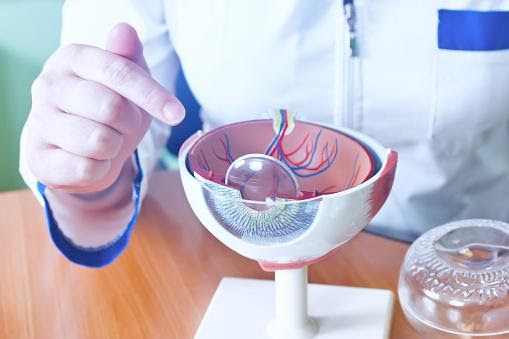Cataract surgery is the most common type of surgery performed worldwide. While the majority of surgeries result in excellent outcomes, the sheer volume of operations raises the likelihood that any surgeon may experience an unpleasant surprise from time to time. With this in mind, three expert surgeons provide guidance on how to handle some of the difficulties that a cataract surgeon may encounter—and, where feasible, how to avoid them altogether.
Proactive Planning
Clearly, the best strategy to handle intraoperative difficulties during cataract treatment is to take two steps:
First, decrease the chance of an occurrence; and second, be prepared in the event of a setback. In that vein, Audrey R. Talley Rostov, MD, a cornea, cataract, and refractive surgeon at Northwest Eye Surgeons in Seattle, makes the following recommendations.

• Anticipate difficulties as much as possible. “There are numerous approaches to anticipate such difficulties in a cataract surgery in advance,” Dr. Rostov observes. “First and foremost, if you anticipate a more challenging case than usual, one that you do not face frequently, such as a sutured IOL, evaluate the cataract surgery procedure with your team in advance.
“Second, understand when to employ specialized equipment to avert a problem during a cataract surgery,” she explains. “For example, the capsule is significantly more elastic in a very young kid, making capsulorhexis much more difficult. If you have a femtosecond laser accessible to do the capsulorhexis, this may be an appropriate application.
“Third, have specialized instruments on hand,” she explains. “If the patient is in his 90s or very young, has a rock-hard nucleus or traumatic cataract, or has a suspected or evident zonular dehiscence or dialysis, you want to be equipped with all the instruments necessary to deal with cataract surgery conditions.”
For instance, if a patient has an advanced, thick, white, or brown cataract, I want to have Malyugin rings, iris hooks, Trypan blue, intraoperative epinephrine, and vitrectomy equipment ready in the room in case of a problem. Obviously, they are not required in every circumstance, but having the equipment readily available eliminates the need for your OR personnel to go searching for it.
“Fourth, always have a backup lens on hand in case the bag or the zonules fail,” she advises. “While this is not a typical occurrence during cataract surgery, you must be prepared for it. The STAAR AQ2010 is probably the best sulcus lens, as its focal length is 13.5 mm rather than 13 mm. Maintain a three-piece IOL as a backup; these can be used in the sulcus as long as you are aware of their limits. Hopefully, by now, every surgeon is aware that a single-piece acrylic IOL should never be placed in the sulcus.”
• When confronted with adversity, employ other tactics. “Complications might occur if the regular practice is followed in an atypical setting,” Dr. Rostov cautions. “For instance, if the nucleus is very thick and adherent to the capsule, phaco chop may cause difficulties. In such a case, I sculpt as much as possible and create a massive bowl that will eventually fall on itself. I may then viscodissect it from the posterior capsule using viscoelastic. This considerably decreases the risk of complications.”
• Prevent your view from being blocked. “At times, while the assistant is squirting BSS on the cornea, it might temporarily impair your visibility,” Dr. Rostov says. “During that brief obliteration of your vision, you risk facing the capsule, puncturing the posterior capsule, or grasping the anterior capsule. The approach is to ensure that your assistant only irrigates briefly and only when you specifically request it. Then you’ll know when to anticipate it and your perspective won’t be clouded when you least expect it, such as during a critical move.” Click here to read about Expect these things after cataract surgery.
• Be on the lookout for warning signals. “Whenever something out of the norm occurs, pause and take a minute,” she advises. “Take a look around and be acutely aware of your surroundings. This is especially critical in non-routine instances or those that have the potential to become more difficult.”
Complications of the Cornea

With clean corneal incisions becoming more prevalent in contemporary cataract surgery, various corneal problems are possible.
• Abrasions to the cornea. “Corneal abrasions can occur during the wound formation process or because of a tool slipping over the eye, such as while inserting the speculum,” explains Robert Weinstock, MD, director of the cataract and refractive surgery at the Eye Institute of West Florida in Largo, Fla. “Almost any tool used in cataract surgery has the potential to cause an epithelium abrasion, and in certain cases, an epithelial abrasion can block the surgeon’s eyesight during the procedure.
“The surgeon has numerous cataract surgery options available to him, depending on the size and location of the abrasion,” he explains. “One possibility is to apply a cohesive viscoelastic to the cornea to increase surgical visibility and conceal the abrasion. Another approach is to debride the central epithelium; however, this is often used as a last resort and only when the vision into the eye is significantly restricted due to a foggy or damaged epithelium.
“At the conclusion of the case, I propose placing a soft contact lens on the eye to alleviate acute discomfort and promote healing,” he says.
• Burns to the wound. “While wound burn is less prevalent these days due to better phaco power modulation and laser cataract softening, it is still possible if a particularly thick nuclear fragment becomes lodged in the phaco needle handpiece or tubing and prevents aspiration passage out of the eye,” Dr. Weinstock explains. “If you’re at foot position three and no fluid is draining from the eye via the needle, the eye will heat up sufficiently to induce thermal injury to the cornea. If this occurs, the consequences can be rather severe.
“Something must be obstructing the phaco needle, handpiece, or tubing in order for this series of events to occur,” he says. “A clog can occasionally be induced by a thick dispersive viscoelastic or a nucleus particle. If you step on the phaco pedal when a clog stops fluid from cooling the phaco needle from flowing, you risk developing a wound burn, even if you’re using a fresh phaco machine with pulse modes. Typically, there are some indications that anything is wrong; for example, you may notice plumes of white smoke in the anterior chamber and nothing appears to be draining out of the eye via the phaco needle. Additionally, you’ll probably notice that the cornea begins to appear yellowish and coagulated, most commonly on the front lip of the incision. Once you see this, it’s generally ‘game over.’
“If you detect a blockage or obstruction, you must immediately cease operations,” he advises. “Remove the phaco needle from the eye and flush the tip, handpiece, and tubing with sterile water. The majority of the time, I discover the cause is a thick nucleus lodged in the tube.
